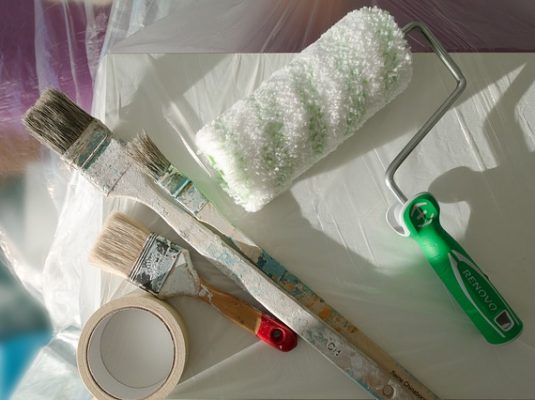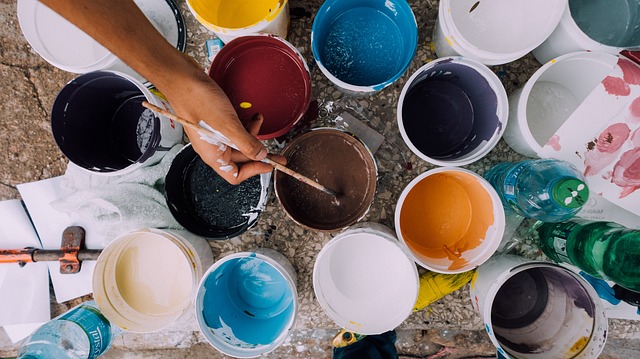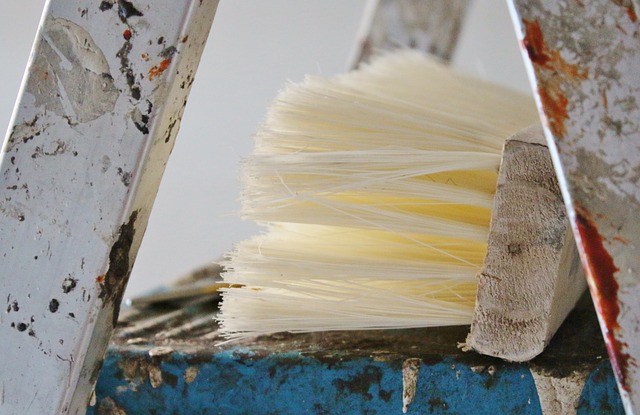
Renovating A House Where To Start
Renovating your house can be a daunting process. While this experience is likely to be exciting, it might steer a whirlwind of confusion too. Factors such as your budget, the amount of time on your hands and where you will be staying in the meantime will also contribute to how the renovation process goes. Remember to keep all of these minor and major details in mind before you begin. Once you have gotten together all your ideas, here’s how you can start:
1. Conduct a Detailed Analysis on Your Home
It only makes sense that you begin with a detailed analysis of your home. Better yet, contact a licensed home inspector who will scour the place for any faults in the air conditioning unit, look for leaks and hunt the basements. You’ll also have to take a look at the electrical panels and plumbing systems. If any of these areas require repairs that will have to be taken care first before initiating the renovation project.
Read our guide on how to start a large renovation of an amazing extended home.
2. Set a Budget
It’s always a good idea to manage expectations in advance by setting a budget. Consider what areas and materials you’d like to work with. Sticking to a budget is a good idea in case you may have to spend a couple of extra pounds in case of emergency repairs.
3. Consider Areas You Can DIY
Depending on your skillset, you might not need someone to install new furnishings. It’s a good idea to make a list of jobs you can do yourself. There’s no shame in having the contractor do all the nitty-gritty, but if you’d like to start some personal projects of your own, that isn’t a bad idea either.
Also, don’t try to be overly ambitious here. You can injure yourself if you’re not experienced enough hence let the professionals do their jobs.
4. Make Plans For Your Accommodation
Your renovation plans are great but surely, you’ll need to figure out where you will be staying the entire time. If you’re staying with friends and family, there may be no need to rush the time-frame at all. But since nobody likes over staying their welcome (hotels can also be expensive), it’s a good idea to speak to your contractors about getting everything done in a timely manner.
We also advise you to conduct regular rounds to ensure everything is running smoothing. Stopping the project midway can really put you behind schedule.
5. Use Reliable Contractors
Nothing is worse than ending up with something you didn’t want. Building a house can be costly, make sure you’re getting your money’s worth. Get in touch with your friends and neighbours and ask for referrals. It’s always a good idea to work with someone from within your circle.
Take your time and interview candidates. Be sure to bounce off some ideas and talk about aspects of the project that are important to you. If you don’t have plans, shortlist contractors and ask them to present a proposal within your desired budget. You can also ask local companies to provide you a quote.
6. Get a Written Contract
Renovation is a big project which is why simply having a verbal agreement with your contractor isn’t going to settle it. Put all the details in one place and put together a contract. Writing up an agreement will also help manage expectations before starting the job.
7. Secure Permits and Invest in Materials
Depending on where you live, you’ll have to secure permission to ensure none of your work is halted in between or will require a do over later on. Speak to your contractor to ensure they are aware of the municipality’s regulations.
Keep in mind that these regulations are likely to change from time to time depending upon where you live. Make sure your contractor is aware of the latest regulations when getting necessary permits.
8. Try Your Best to Stick to the Plans
We all love to improvise and while spontaneity is an admirable quality, it may get in the way of your current renovation plans. Try your best to stick to the details laid out in your contract. Any last minute alterations will impact your existing budget and overall schedule.
Of course, it makes sense to be flexible if something goes wrong and you have to come up with an alternative plan.
9. Order Materials
Once you have gotten all the paperwork sorted, it’s time you start ordering materials. This will include getting paint, new windows, doors, drywall etc. Ideally, talk all this through with your contractor and ensure that both of you are on the same page.
10. Starting Demolition
After all the paperwork and materials have been taken care of it, it’s time to start the demolition phase. Carefully demolish the areas around the house which you plan to renovate. A word of caution, a few safety measures ought to be taken if you are demolishing surfaces that have been coated with lead-based paint. Start Demolition Repairs Come First
11. Repairs Come First
Keep in mind that tedious repair work such as fixing the roof or repairing old ceilings. It’s also a good idea to clear out any water issues which you might be facing. Such repair work can take some time hence get the big projects sorted out first.
12. Electrical, HVAC and Plumbing
While most wires and pipes are usually never in sight, electricity and plumbing serve as integral components that keeps any house running. As the area is demolished, the ceilings and walls will be opened up, this is when you should install new plumbing or ductwork for air conditioning and heating. Any upgrades or repair work will have to be taken care of in this phase.
After all, baring the walls afterward can be incredibly inconvenient. A proper inspection can also be done in this phase before you decide to close up the walls.
13. Don’t Forget The Walls
Aside from the plumbing and electrical work, you can also start working on insulation and subfloors when the walls are down.
Once all this is taken care of, you’ll have to close up the walls with some drywall. This is a relatively simple process and won’t take much of your time. Sheets of drywall are applied and then allowed to dry. You might want to repeat the process if you’re aiming for absolutely seamless results.
The next step would be to add a splash of colour to your brand new space.
 14. Paint it!
14. Paint it!
Of course, you want your new renovation project to spark joy in your life. This is more likely to happen if you add a fresh coat of paint. Getting the paint job done is a good idea.
You’d ideally want to get the walls painted before installing new flooring. Doing so will prevent splashes of paint from falling and spilling all over your new floors. And we don’t want that to happen now, do we?
Alternatively, if you’re not up for a paint job, you can install new wallpapers too. This is an excellent option if you’d like to save time on a paint job.
Further reading: 9 Best Colours for Small Kitchen in 2020
15. Install Flooring
Whether it’s wood or plain old marble, installing new flooring can instantly alter the overall look of your existing space. Some people like to install their flooring before getting the house painted – you’re free to choose whichever way you’re more comfortable with.
16. Windows and Doors
Almost no renovation project is complete without installing new windows and doors.
We can’t explain how much we love energy-efficient and glazed windows. While the new upgrades can be costly, they will definitely pay off in the long run. Going green is not only good for the environment but it can also drastically reduce energy costs in the long run. This will obviously become profitable for you when you’re putting your house on sale.
As for the door, you can stick to the old one or get an upgrade here too.
 17. Finishing Touches
17. Finishing Touches
Congratulations! At this point, you’ve taken care of all the major jobs and are near the finishing line. Final touches include inspecting the paint job, trimming or moulding to ensure all surfaces are seamless and sanding the floors.
Since this final task requires plenty of attention to detail, you might want to save it for last since it can potentially damage the rest of your work.
Also use this time to inspect the window and door frames one last time. You can also install new bookshelves, furnishing and add other finishing touches around the house to make it feel like home!
18. Add Some Personality
Once you’ve added your final touches, it’s time you add a little personality to your new space. Some nice picture frames, a gorgeous vase of a new rug. These little changes can make a world of difference to your newly renovated home.
Check out this post on how to decorate bedroom walls.
Bringing it All Together
We hope you enjoyed reading our detailed guide on how to renovate your home. Feel free to reach out to us if you require professional help. Our team here at Claire Davies Interiors will always be happy to guide you.
Here are the areas we currently cover: